The best compost for strawberries will be rich in organic matter and completely broken down. Strawberries prefer slightly acidic soil, so look for a compost with a pH between 5.5 and 6.5 and is high in nitrogen, phosphorus, and potassium, which are essential nutrients for healthy strawberry plants. Compost can be mixed into your strawberry bed in spring before planting new plants. Compost can also be used as a top dressing for older strawberry plants by adding a thin layer on the soil surface around the root zone.
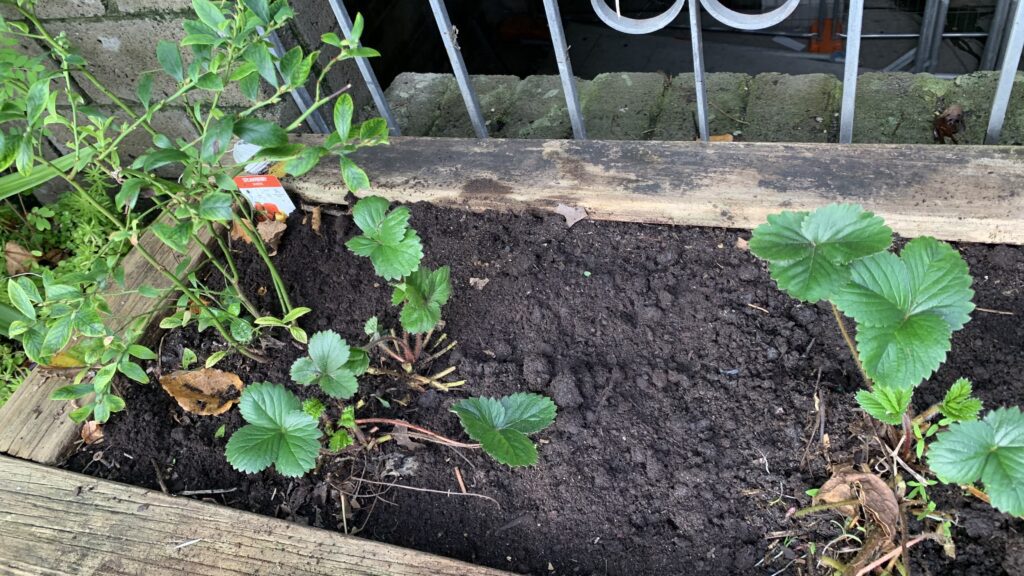
Strawberries grown in garden beds, pots and raised beds will all benefit from compost. You can mix the compost into the soil before planting and top dress established plants with compost in spring. New strawberry plants will only need the compost mixed into the soil in their first year. In the next year you can top dress the root zone with compost in spring. Make sure that your strawberries are positioned in full sun to get healthy leaf growth, flowers and fruit.
Key Takeaways
- Compost is essential for growing healthy, flavorful strawberries.
- When choosing compost for strawberries, look for a pH between 5.5 and 6.5, good drainage, and high levels of nitrogen, phosphorus, and potassium.
- Applying compost to strawberry plants can help improve soil quality and increase fruit yields.
Importance of Compost for Strawberries
When it comes to growing strawberries, using the right compost is crucial for healthy plant growth and a bountiful harvest. Compost provides essential nutrients and minerals that strawberries need for healthy growth and fruit production. Here are some key reasons why compost is so important for your strawberry plants:
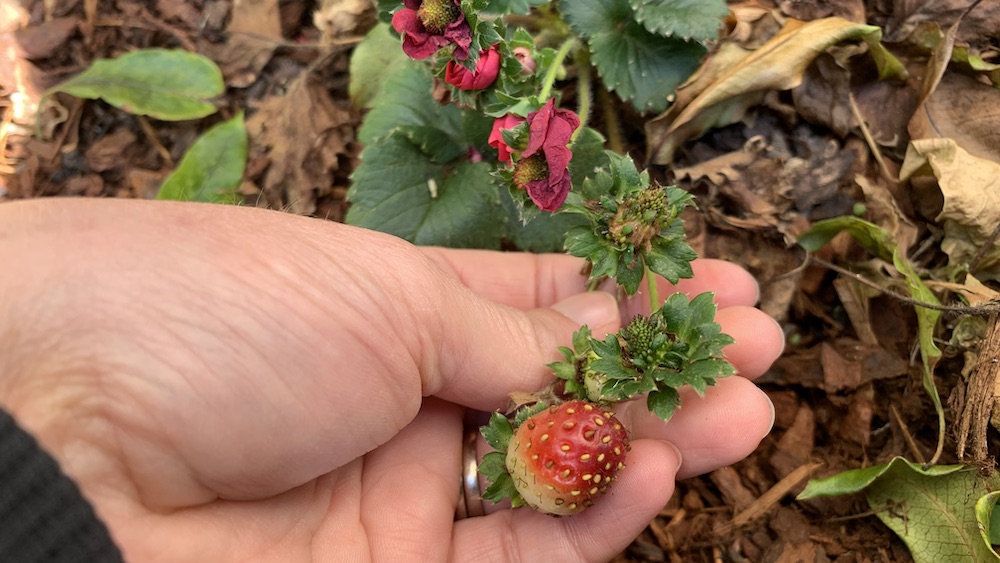
1. Provides Nutrients
Strawberry plants need NPK – nitrogen (N), phosphorus (P), and potassium (K) – along with other nutrients and minerals for healthy growth. Compost is a rich source of these essential nutrients and provides a slow-release fertilizer that feeds your plants over time. By using compost, you can make sure that your strawberry plants have access to the nutrients they need to thrive.
2. Improves Soil Quality
Compost is an excellent soil amendment that improves soil quality by increasing soil organic matter, improving soil structure, and soil fertility. By adding compost to your soil, you can improve soil drainage, water-holding capacity, and nutrient retention.

3. Suppresses Diseases
Compost contains beneficial microorganisms that can help suppress soil-borne diseases and pests. These microorganisms can help protect your strawberry plants from harmful pathogens and pests, reducing the need for chemical pesticides and fungicides.
4. Reduces Waste
Using compost is an environmentally friendly way to dispose of organic waste. By composting kitchen scraps, yard waste, and other organic materials, you can reduce the amount of waste that goes to landfills. A worm farm is an easy way to compost your kitchen scraps and turn it into a rich compost for your strawberries.
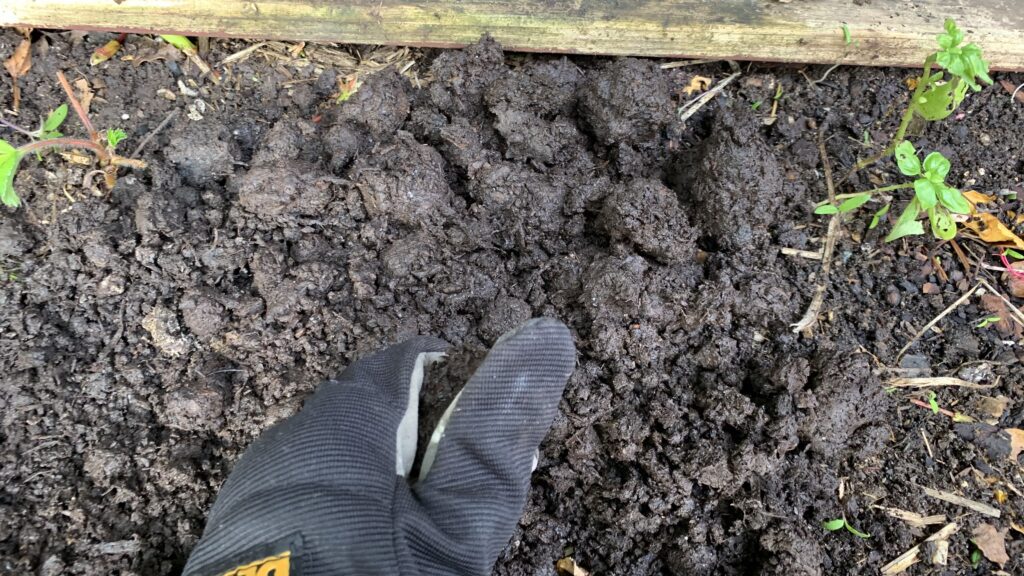
Best Compost for Strawberries
If you want to grow healthy and productive strawberries, choosing the right compost is essential. Here are some of the best compost options for strawberries:
Organic Compost
Organic homemade or commercial compost is a great choice for growing strawberries. It can be made at home from a mixture of organic materials, such as leaves, grass clippings, and kitchen scraps. Organic compost is rich in nutrients and beneficial microorganisms, which can help improve soil quality and plant growth. You can apply compost to your established strawberries in early spring, late spring or early summer to help to keep the water in the soil and gently feed the plant roots.
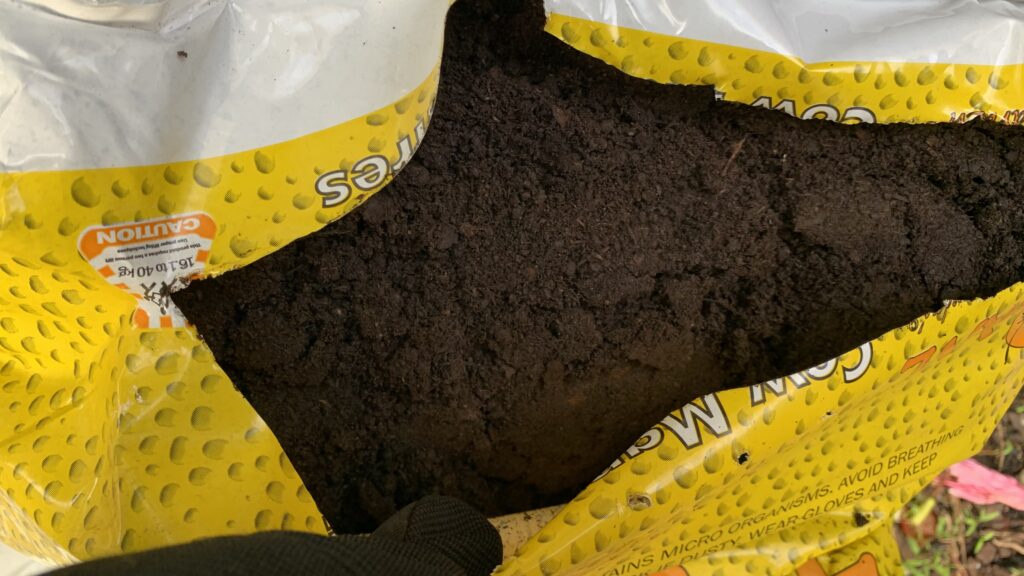
Worm Compost
Worm compost, also known as vermicompost, is another great option for growing strawberries. It is made from worm castings, which are rich in nutrients and beneficial microorganisms. Worm compost can help improve soil structure, water retention, and nutrient availability. For the best results, organic fertilizers like pelleted chicken manure in combination with a top dressing of compost in spring will feed your strawberries over the growing season.
Aged Manures
Aged manures, such as cow or chicken manure, can also be used as compost for strawberries. It is important to use aged manure, as fresh manure can be too high in nitrogen and other nutrients, which can burn the plants. Aged manure is rich in nutrients and beneficial microorganisms, which can help improve soil quality and plant growth.
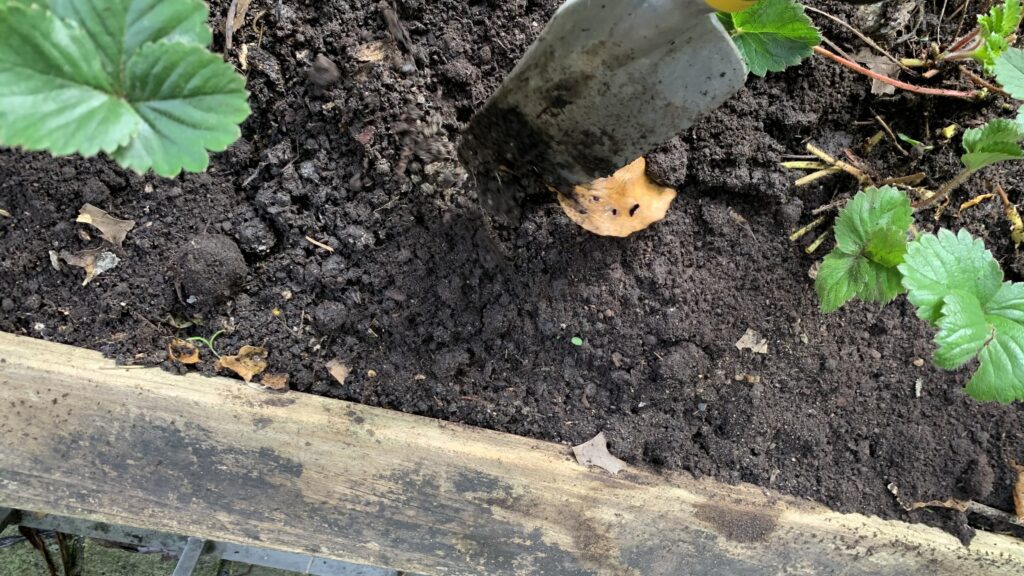
When choosing the best compost for strawberries, it is important to consider the pH level of the soil. Strawberries prefer slightly acidic soil with a pH of 5.3 to 6.5. You can use a soil test kit to determine the pH level of your soil and adjust it if necessary. Additionally, it is important to avoid using compost that contains pesticides or herbicides, as they can harm the plants and the beneficial microorganisms in the soil.
To use compost for June-bearing strawberries, apply a layer of well-rotted compost around the base of the plants in early spring or late fall. Gently spread it, avoiding direct contact with the crowns. This will enrich the soil with nutrients, improve moisture retention, and suppress weeds. This promotes healthier strawberry growth, larger fruit production, and minimizes the need for synthetic fertilizers, for an amazing June harvest.
Factors to Consider when Choosing Compost for Strawberries
When it comes to growing strawberries, choosing the right compost is crucial. The right compost can provide the necessary nutrients, pH level, and texture that strawberries need to thrive. Here are some factors to consider when choosing compost for strawberries.
Nutrient Content
Strawberries require a balanced mix of nutrients to grow and produce fruit. When choosing compost for strawberries, look for compost that is high in nitrogen, phosphorus, and potassium. These nutrients are essential for plant growth and development.
Here are some common compost ingredients and their nutrient content:
| Compost Ingredient | Nitrogen Content | Phosphorus Content | Potassium Content |
|---|---|---|---|
| Grass clippings | High | Low | Low |
| Kitchen scraps | High | Low | Low |
| Leaves | Low | Low | High |
| Chicken Manure | High | High | High |
pH Level
Strawberries prefer slightly acidic soil with a pH level between 5.3 to 6.5. When choosing compost for strawberries, it’s important to consider the pH level of the compost. If the pH level is too high or too low, it can affect the growth and yield of your strawberry plants.
Here are some common compost ingredients and their pH levels:
| Compost Ingredient | pH Level |
|---|---|
| Coffee grounds | 4.5-6.0 |
| Eggshells | 6.0-7.5 |
| Grass clippings | 6.0-7.5 |
| Leaves | 4.5-5.5 |
| Manure | 6.5-8.0 |
Compost Texture
The texture of the compost is also important when growing strawberries. Strawberries prefer loose, well-draining soil that allows their roots to breathe. When choosing compost for strawberries, look for compost that is light, fluffy, and crumbly.
How to Apply Compost to Strawberry Plants
When it comes to growing strawberries, using the right compost can make all the difference. Before planting new strawberry plants it is best to mix aged compost directly into the soil. For each plant i like to add a few handfuls of compost, worm castings or aged cow manure to my garden beds. Young plants will benefit from the extra drainage, fertile soil and water holding capacity of the extra compost.
Here are my easy tips to add compost to strawberry plants already growing in the ground or in pots.
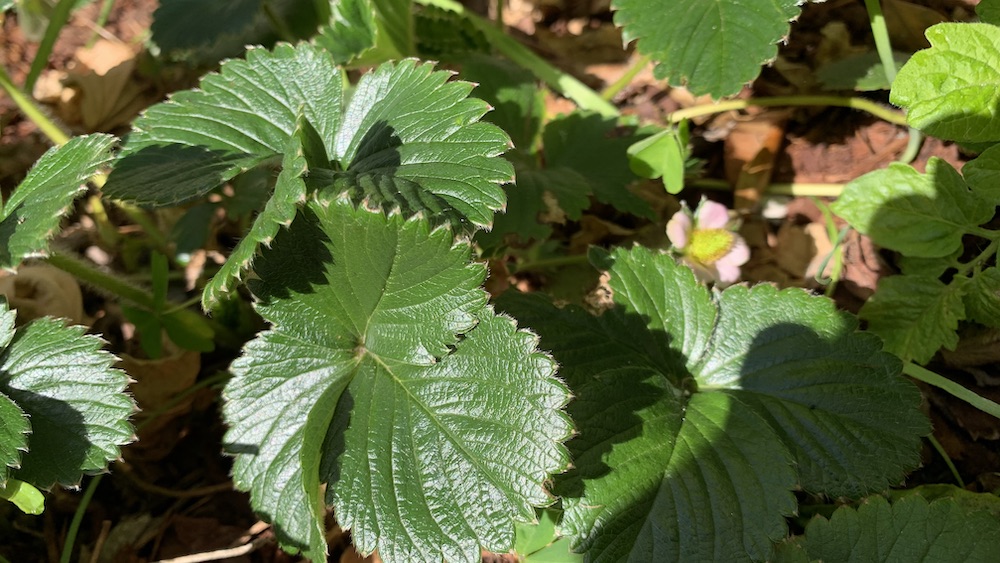
Preparation Stage
Before applying compost to your strawberry plants, it is essential to clear the area around your strawberry plants of any weeds or debris. Use a small garden fork or rake to remove any old mulch. Take the time to snip off any dead leaves or old runners from the previous year.
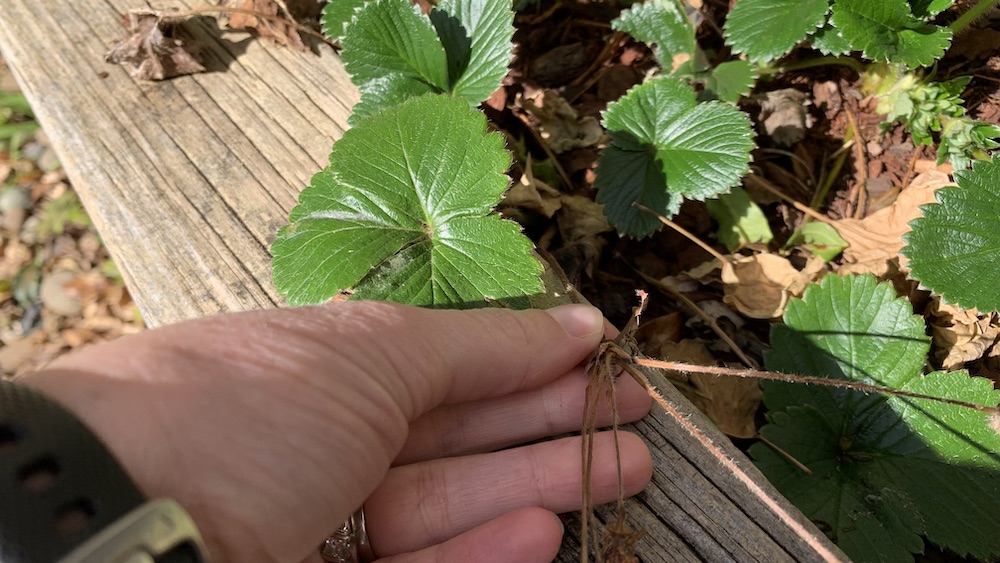
Application Stage
Once you have prepared the soil, it’s time to apply the compost. Here are the steps to follow:
- Apply a layer of compost around the base of each strawberry plant, making sure to cover the entire area where the roots are located. Leave a gap of a few inches between the compost and the stem of the plant.
- Cover the compost with bark chips or straw.
- Water the plants well after applying the compost to help it settle into the soil.
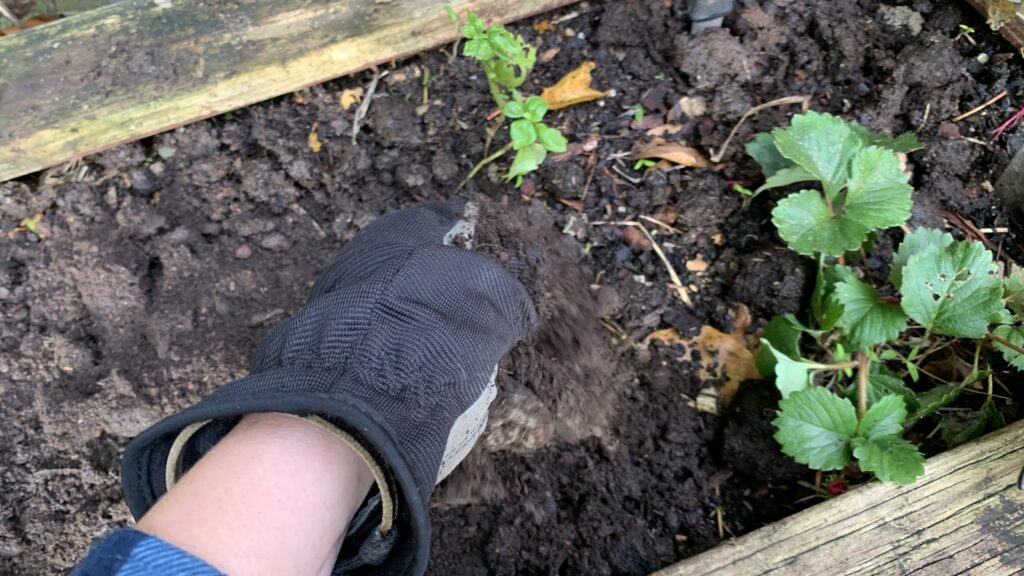
Maintenance Stage
After applying the compost, it’s important to maintain your strawberry plants to ensure they continue to grow healthy and strong. Here are some tips for maintaining your plants:
- Water your strawberry plants regularly, especially during dry weather.
- Top up the mulch around the base of each plant with straw or another organic material to help retain moisture and suppress weeds.
- Fertilize your plants with a balanced, slow-release fertilizer every few weeks during the growing season. You can use a commercial granular fertilizer or pelleted chicken manure.
- Watch out for pests and diseases and take action as soon as you notice any problems. Its a good idea to check your strawberries daily during the growing season.
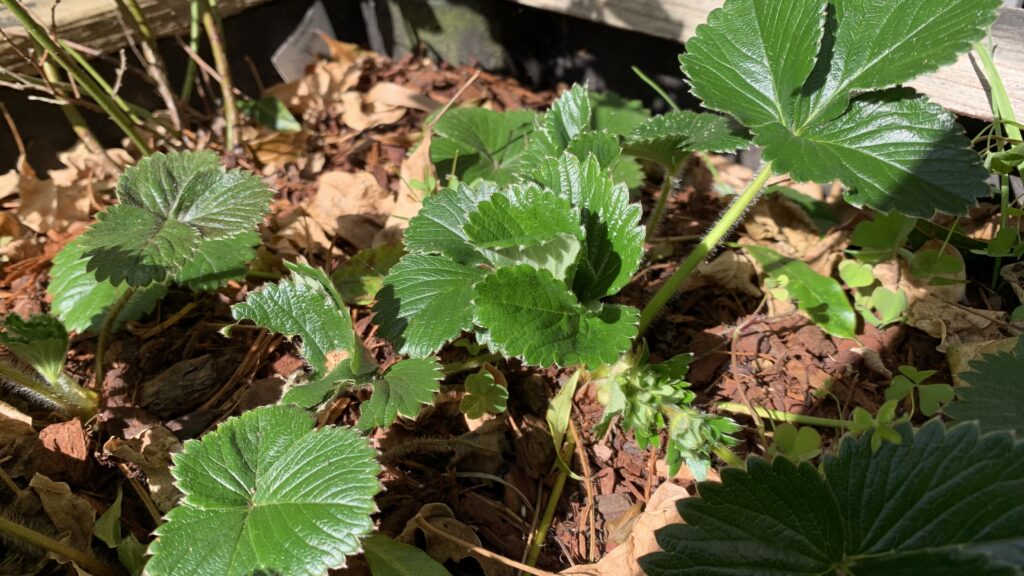
Summary
Adding compost to the soil before planting new strawberries or top dressing established plants is a great way to get a good crop. Compost is great for all strawberry types including June-bearing, everbearing, alpine strawberries and day-neutral strawberries. Strawberries prefer slightly acidic soil with a pH between 5.5 and 6.5 which makes adding organic compost a great option. By adding compost in spring your strawberry patch will be full of the best strawberries for you and your family.
Frequently Asked Questions
What is the best soil mixture for growing healthy strawberries?
The best soil mixture for growing healthy strawberries is a well-draining soil that is rich in organic matter. When planting in pots or strawberry towers, choose a top quality potting mix. For strawberry plants grown in the ground, mix through well aged compost and cow manure before planting.
How can I ensure my strawberry plants survive the winter in raised beds?
To ensure your strawberry plants survive the winter in raised beds, it is important to cover them with a thick layer of mulch. This will protect the roots from freezing temperatures and prevent them from drying out. You can use straw, leaves, or pine needles.
What are some tips for fertilizing strawberry plants?
When fertilizing strawberry plants, it is best to use a balanced fertilizer that contains equal amounts of nitrogen, phosphorus, and potassium. You should apply the fertilizer in the spring and again in the fall. Be sure to follow the manufacturer’s instructions for application rates.
What should I do with my strawberry plants in pots at the end of the season?
At the end of the season, you should remove any dead leaves or debris from your strawberry plants in pots. You can then cut back the foliage to about one inch above the crown. Move the pots to a protected area, such as a garage or shed, and cover them with a thick layer of mulch to protect the roots from freezing temperatures.
Why are my strawberry seedlings not growing and what can I do about it?
If your strawberry seedlings are not growing, it may be due to poor soil quality or lack of nutrients. Make sure the soil is well-draining and rich in organic matter. You can also fertilize the plants with a balanced fertilizer to provide the necessary nutrients. Be sure to follow the manufacturer’s instructions for application rates.
When is the best time to cut back everbearing strawberries for maximum yield?
The best time to cut back everbearing strawberries for maximum yield is in the late summer or early fall, after the last harvest. Cut back the foliage to about one inch above the crown. This will encourage the plants to produce new growth and increase the yield for the following year.
I am an accredited practicing dietitian, experienced gardener and a dedicated cook. I love writing and sharing my experience so you can learn from my successes and mistakes.
